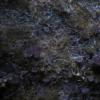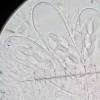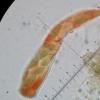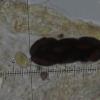
15-12-2025 07:09
 Danny Newman
Danny Newman
indet. Rutstroemiaceae sp. on unk. fallen leavesMc

18-12-2025 21:17
Pol DebaenstThe identification took me to Byssonectria deformi

19-12-2025 10:10
Patrice TANCHAUDBonjour, récolte réalisée en milieu dunaire, a

18-12-2025 17:23
 Bruno Coué
Bruno Coué
Bonjour,je serais heureux d'avoir votre avis sur c

18-12-2025 18:07
Margot en Geert VullingsThese plumes were found on rotten wood.They strong

17-12-2025 18:35
 Michel Hairaud
Michel Hairaud
Bonjour à tous/Hi to everyone I am passing along

15-12-2025 15:48
 Danny Newman
Danny Newman
Melanospora cf. lagenaria on old, rotting, fallen

15-12-2025 15:54
 Johan Boonefaes
Johan Boonefaes
Unknown anamorph found on the ground in coastal sa

15-12-2025 21:11
 Hardware Tony
Hardware Tony
Small clavate hairs, negative croziers and IKI bb
Hello,
I found these violet frb on deer dung. Size up to 0,4mm. I see dark coloured tips of asci protruding above frb. Problem is that I see clustered brown (max 10%) spores and loose hyaline ones (90%). Which species could this be and which spores belong to the violet frb?
Loose spore in 8-spored J+asci, size 15/17x7/7,5µm, spores are smooth, without striae and thick walled (1µm), asci up to 21x130µm, paraphyses not swollen
Clustered spores: brown, 40/45x15/17
regards,
Ralph

you have a Saccobolus species there. The spores start off as free in the ascus and then by a wonderful phenomenon become united in a single 'spore-ball' the spores becoming pigmented as they mature. The pattern formed by the spores in the spore-ball is constant within a species.
Most of the spores in your images are immature. Do you have van Brummelen's 1967 monograph?
Cordialement
Chris

This is probably Saccobolus depauperatus; to comfirmed by other observations.
Michel.
Hello,
Thanks for the info. I don't think however it's depauperatus as average spore clusters are over 40µm long. Could it be versicolor?
PS I will check again because all terms of the key I use aren't clear to me.
regards,
Ralph

Hello Ralph,
It can be A. depauperatus but also A. versicolor it depends on the size of the spore cluster (your photo shows pattern III) and the single spores.
For A. depauperatus cluster is 28-37x10-13 um; single spores 10-14.5x5-7.5 um.
For A. versicolor cluster is 40-62x14-19 um; single spores 13-21.5x6.5-9.5 um.
Spores seem to be immature but when your measurement is correct I would go for A. versicolor. Also the size of the ascus does compare with A. versicolor in my opinion
Measuring cluster and spore sizes have been made easier with the software program that goes with the microscope camera, works for me.
Joop







